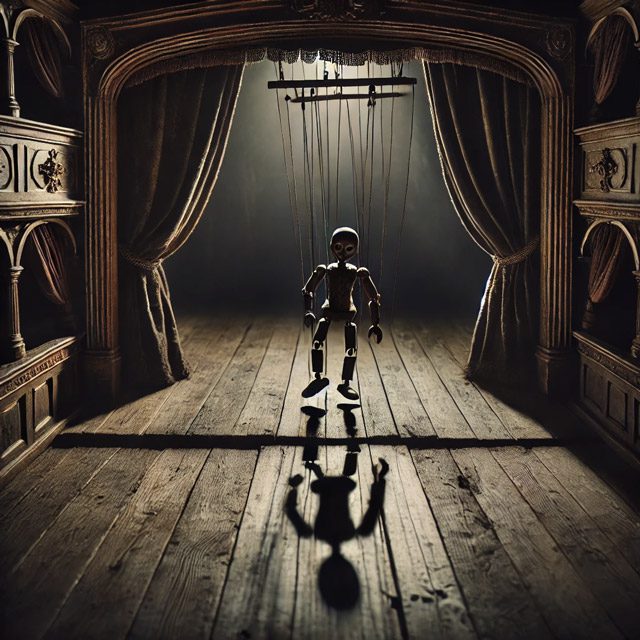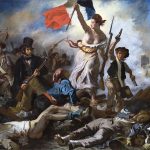

Puppet theaters have this eerie, almost magical quality that draws you in, right? From their exaggerated expressions to their jerky, unnatural movements, they have the power to both fascinate and freak people out in equal measure. But how did these little figures—controlled by strings and hands—go from simple storytelling tools to unsettling symbols in the world of visual arts? Hold on to your seats (and maybe double-check there’s no puppet lurking behind you) as we dive into the creepy history of puppet theaters and their undeniable influence on art.
The Origins of Puppet Theater: Not Just for Kids
When you think of puppets, you might imagine a quaint little theater with a cast of wooden figures entertaining kids with goofy antics. But puppets weren’t always about fun and games. Long before Disney ever existed, puppets had a much darker origin. In fact, ancient civilizations like Egypt, Greece, and China used puppetry not for entertainment, but for religious rituals, ceremonies, and political commentary.
Take the ancient Egyptians, for example. Their puppets often represented gods and spirits, and were used in ceremonies to communicate with the divine. Shadow puppetry in China dates back to the Han dynasty (around 200 B.C.) and was used to tell stories of ghosts and spirits—stuff you definitely wouldn’t find in your average kid’s puppet show.
But perhaps the most intriguing (and creepy) part is how these early puppets weren’t just props—they were seen as vessels for spiritual beings. Imagine attending a puppet show where the figures were believed to house the souls of ancestors. Spooky, right?
Medieval Puppet Shows: Dark Morality Tales
By the Middle Ages, puppet theaters had gained a foothold across Europe. They were often used in morality plays, which, let’s face it, weren’t exactly lighthearted. These puppet shows delivered harsh lessons on life, death, and morality through disturbing tales. Sin, damnation, and eternal suffering were common themes—hardly the stuff of bedtime stories.
Enter Punch and Judy, a particularly infamous puppet duo that rose to fame in the 17th century but originated much earlier. Punch, with his exaggerated nose and sinister laugh, would beat up his wife Judy in a disturbingly violent routine that had crowds in stitches. And then there were the hangmen, devils, and policemen who met equally unpleasant fates. If that doesn’t scream “unsettling,” I don’t know what does.
Yet, despite the violence, people kept coming back. The exaggeration of human flaws and the dark comedy of it all resonated with audiences. It was like watching a medieval version of a dark comedy sitcom—if that sitcom involved frequent beatings, of course.
Puppets and the Grotesque: 18th and 19th Century Developments
By the time the 18th and 19th centuries rolled around, the grotesque had become a celebrated art form. Puppet theaters in Italy and France leaned into this trend, and their performances took on even more exaggerated, eerie forms. Think of the carnival masks of Commedia dell’Arte, with their grotesque expressions—they were a perfect inspiration for puppet design.
Artists and performers started to appreciate how puppets could embody the grotesque in ways that human actors couldn’t. With their exaggerated features, marionettes and hand puppets became caricatures of society. Distorted figures with oversized noses, wide, staring eyes, and crooked mouths were used to convey deep human fears. It wasn’t just about entertainment anymore—it was about expression, and the darker, the better.
In fact, art movements like Romanticism and Symbolism embraced this sinister edge. Puppets were often used to embody themes of death, decay, and the macabre. The grimness of life could be explored in ways that would have been too much for live actors. Puppets became symbols of life’s fragility—after all, they’re literally held up by strings, just like we are by the delicate thread of life. Or at least, that’s what the artists wanted us to believe.
The Golden Age of Puppetry: A Symbiotic Relationship with Visual Arts
Fast forward to the 20th century, and we hit what many call the “Golden Age” of puppetry. This was when puppetry was truly embraced as an art form, particularly by visual artists who saw its potential to challenge conventional forms of expression.
Take Pablo Picasso, for instance. He didn’t just dabble in painting and sculpture—he was fascinated by puppets and even designed some for avant-garde productions. Artists like Paul Klee and the Bauhaus movement saw puppets as a way to explore abstraction and form, further blending the boundaries between visual arts and performance. Klee, known for his playful yet deeply symbolic art, designed marionettes that were almost unsettling in their simplicity—large, expressionless heads with thin, fragile bodies.
The Salzburg Marionette Theatre, founded in Austria in 1913, also played a huge role during this period. Their performances of operas and ballets were unlike anything seen before—delicate marionettes enacting tragic love stories or dark Faustian deals. Puppets were no longer just entertainment; they had evolved into high art.
The Cinematic Influence: Puppetry in Horror Films
And then, of course, came the movies. If puppets weren’t creepy enough on stage, horror films took their unsettling nature and cranked it up to 11. Movies like Puppet Master, Dead Silence, and The Conjuring franchise turned puppets into full-fledged horror icons. Dolls that could move, talk, and—worst of all—kill? Cue the nightmares.
It’s no coincidence that puppets are a recurring theme in horror. Psychologists argue that puppets fall right into the “uncanny valley”—the theory that humans find figures unsettling when they’re almost, but not quite, lifelike. We recognize the puppet as something that should be human, but it’s just off enough to give us the chills.
In these films, puppets are often used as symbols of control and manipulation. They’re both inanimate and animate, under someone’s control, yet seemingly with a will of their own. They can act out the darker parts of our psyche, representing what we fear most—loss of control, helplessness, and being manipulated by forces beyond our understanding.
Contemporary Puppet Artists: Creepy and Creative
Despite their eerie reputation, puppets are alive and well in today’s art scene, and they’re being used in some pretty innovative (and still creepy) ways. Artists like Basil Twist and Ronnie Burkett have become household names in the puppetry world, known for their emotionally rich and often disturbing puppet performances.
Basil Twist, for example, is known for creating mesmerizing underwater puppet shows, blending beauty with eerie, otherworldly atmospheres. Ronnie Burkett’s shows, on the other hand, tackle difficult subjects like mortality and identity, with puppets that are disturbingly lifelike and full of emotional depth. Handspring Puppet Company, famous for their work on War Horse, uses puppets to evoke raw, emotional performances—making the viewer forget they’re watching wooden and fabric figures.
These contemporary puppeteers continue to push the boundaries of what puppetry can be, blending traditional techniques with modern storytelling and technology. Their puppets may look more polished, but the unsettling edge is still there.
The Role of Puppet Theaters in Today’s Visual Art World
Puppet theaters might not dominate the mainstream anymore, but their influence on visual arts is undeniable. Many modern artists are drawn to puppetry’s unique ability to play with themes of control, power, and the grotesque. Museums and galleries across the world have begun to showcase puppetry as part of larger art installations and exhibitions.
For instance, the Museum of Modern Art (MoMA) has included puppetry in exhibitions exploring the intersection of art and performance. Puppet-like figures have appeared in various contemporary art pieces, questioning the nature of agency and manipulation in today’s society. Puppets may be old-school, but their symbolism remains as relevant as ever.
The Unsettling Appeal of Puppet Theaters: Why They Persist
So why, despite their often creepy and unsettling nature, do puppet theaters continue to thrive? It’s simple: they let us explore the things that scare us most from a safe distance. Puppets allow us to engage with our fears—of control, of death, of the unknown—without the same emotional weight as live actors or real-life situations. We can laugh at Punch and Judy’s violent antics, or shudder at a creepy marionette in a horror movie, but we never have to confront the reality of those emotions.
Puppetry also allows creators the freedom to tackle subjects that might be taboo or too heavy for traditional mediums. With puppets, you can address death, violence, and fear in a way that feels safe yet still resonates deeply with the audience.
Puppet Theaters as Art: Where Do They Stand Today?
Puppet theaters might not be as mainstream as they once were, but they are far from extinct. Today, they blur the lines between performance art, sculpture, and storytelling in a way that few other mediums can. Puppet theaters have earned their place in museums, galleries, and contemporary art scenes as both relics of history and fresh artistic tools.
Schools dedicated to puppetry have seen a resurgence, and puppet-making itself has been embraced as a legitimate art form. From large-scale theater productions like War Horse to avant-garde art installations, puppets continue to hold an important—and often eerie—place in the world of visual arts. They’ve become a medium through which artists can push boundaries, provoke thought, and, yes, unsettle audiences.
A Dark Legacy That Lives On
Puppetry may have started as an ancient form of ritual and storytelling, but today it’s a rich, complex medium that blends performance with art. Whether they’re used to depict moral lessons in the Middle Ages or to evoke chills in modern horror films, puppets have a unique power to entertain and unsettle simultaneously.
As the art world continues to embrace the dark, quirky charm of puppet theaters, their legacy grows stronger. Puppets reflect our deepest fears, our unspoken anxieties, and the uncomfortable truths we’d rather not face. And as Picasso once said, “All art is a lie that makes us realize the truth.” Puppets, with their wooden faces and haunting movements, might just be the perfect liars.
FAQs
- What is the history of puppet theaters?
Puppet theaters originated in ancient civilizations and were often used for religious rituals or political satire. - Why do puppets seem creepy?
The eerie feeling puppets evoke can be explained by the “uncanny valley” effect, where lifelike figures that aren’t fully human make us uncomfortable. - What role do puppet theaters play in visual arts?
Puppets have influenced many visual art forms, from the grotesque in Romanticism to modern installations and performances. - Are puppet theaters still relevant today?
Yes, puppet theaters continue to influence contemporary art, particularly in theater, performance art, and visual installations. - What are some famous puppet theater artists?
Basil Twist and Ronnie Burkett are notable contemporary artists, known for their innovative use of puppetry in performance.
Key Takeaways
- Puppet theaters have a long and eerie history, dating back to ancient civilizations.
- Puppets have been used in various forms of visual and performance art to explore dark and unsettling themes.
- The “uncanny valley” effect plays a significant role in why puppets often evoke fear.
- Modern puppeteers and visual artists continue to explore the artistic potential of puppetry.
- Puppet theaters blur the line between art, performance, and storytelling, making them a unique cultural phenomenon.







